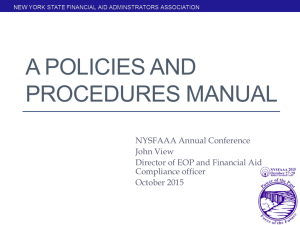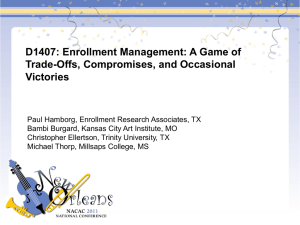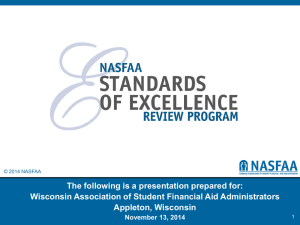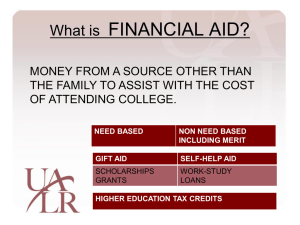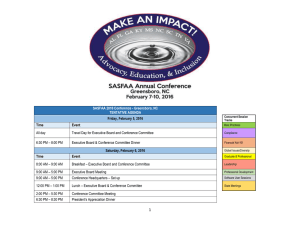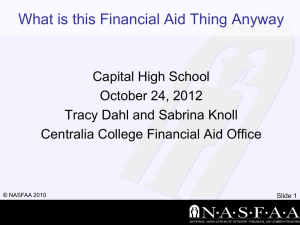Federal Methodology
advertisement
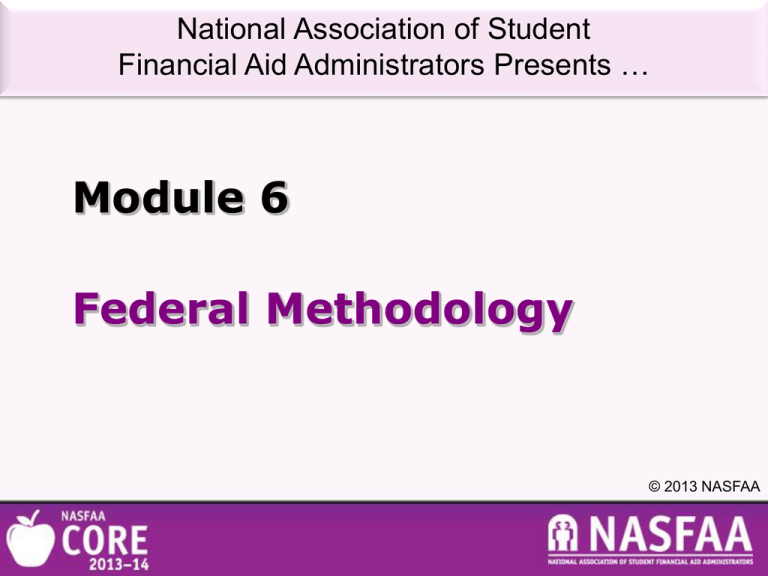
National Association of Student Financial Aid Administrators Presents … Module 6 Federal Methodology © 2013 NASFAA Federal Methodology Method for assessing ability to pay consists of two steps: • Measuring the family’s financial strength • Assessing a portion of family’s financial resources as a contribution toward educational costs Slide 6-2 © 2013 NASFAA Federal Methodology • Methodology used to calculate expected family contribution (EFC) • Classifies students according to one of three models: – Model A: Dependent student – Model B: Independent student without dependents other than a spouse – Model C: Independent student with dependents other than a spouse Slide 6-3 © 2013 NASFAA Federal Methodology Each student model has two formulas: • Regular • Simplified Slide 6-4 © 2013 NASFAA Automatic Zero EFC • If certain criteria are met no calculation is performed, and the EFC automatically is set to zero • Automatic zero EFC is limited to: – Model A: Dependent student – Model C: Independent student with dependents other than a spouse Slide 6-5 © 2013 NASFAA Simplified Formula • Also known as Simplified Needs Test • Qualifying criteria similar to Automatic Zero EFC criteria and applies to all student models, but income cap is higher • Formula excludes assets from EFC calculation Slide 6-6 © 2013 NASFAA Simplified Formula • If asset information reported on Free Application for Federal Student Aid (FAFSA), two EFC calculations – EFC from simplified formula is primary EFC – EFC from regular formula is secondary EFC • School must use primary EFC to calculate need Slide 6-7 © 2013 NASFAA Regular Formula • Full data element formula • EFC calculated for 9-month enrollment period • Specified-year income is used – 2012 is specified year for 2013–14 Slide 6-8 © 2013 NASFAA Regular Formula • Allowances protect portions of income and assets • Equal distribution of calculated amount of available family resources among all family members (other than parents of dependent student) attending a postsecondary school at least half time Slide 6-9 © 2013 NASFAA Rounding Rules • Carry all calculations to 3 decimal places • Round resulting amount to nearest whole number: .001 to .499 round down .500 to .999 round up Slide 6-10 © 2013 NASFAA EFC Recalculation for Other than Nine Months • EFC must be adjusted for enrollment period other than nine months for all Title IV programs other than Federal Pell Grant and Iraq and Afghanistan Service Grant (IASG) programs • Alternate EFCs on Institutional Student Information Record (ISIR) and Student Aid Report (SAR) Slide 6-11 © 2013 NASFAA Summer EFC Example: 3-Month Summer Term If enrollment period 9-12 months, SC = $900; alternate 3-month SC = $300 • If package summer and regular academic year together,12-month SC = $900 • If package summer and regular academic year separately,12-month period SC = $1,200 $900 9-month SC + $300 3-month SC = $1,200 Slide 6-12 © 2013 NASFAA Slide 6-13 © 2013 NASFAA
